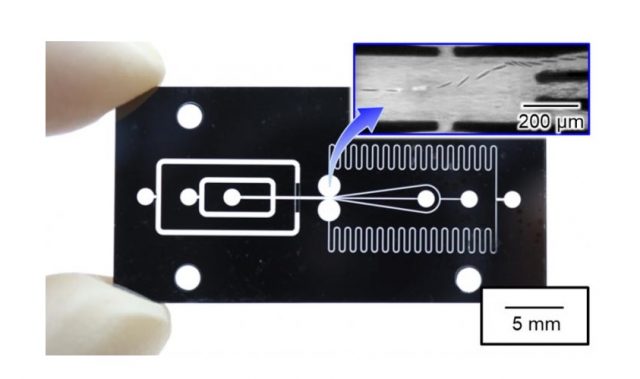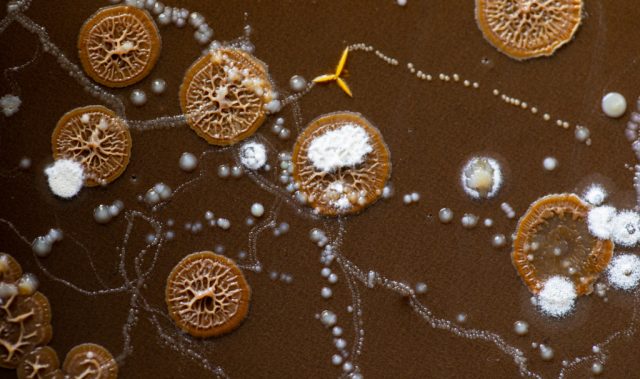
AsianScientist (Sep. 4, 2018) – A research group at the Okinawa Institute of Science and Technology (OIST) in Japan has developed a method to study and analyze biofilms on a chip. Their findings are published in ACS Sensors.
Biofilms—aggregations of bacteria that behave differently from their individual component species—can be hazardous when they contaminate environments such as food and medical facilities. Understanding how biofilms are formed is key to finding ways to defeat them.
In the present study, scientists led by Professor Amy Shen of OIST have devised a chip that allows them to monitor biofilm growth. The chip had mushroom-shaped nanostructures on its surface consisting of a stem of silicon dioxide and a cap of gold, upon which Escherichia coli bacteria could grow. This allowed the researchers to study biofilm assembly kinetics—the biochemical reactions that allow bacteria to produce their linked matrix structure.
When these mushroom-shaped nanostructures were subject to a targeted beam of light, they absorbed it by localized surface plasmon resonance (LSPR). By measuring the difference between light wavelengths entering and exiting the chip, the scientists could make observations about the bacteria growing around the mushroom structures.
“This is the first time we have used this sensing technique to study bacterial cells,” said Dr. Riccardo Funari, a biotechnologist at OIST who is the first author of the study.
In addition, the researchers developed a way to automate the analysis of the stream of LSPR data. Going forward, they plan to miniaturize the technology into a portable device that could be used in an array of biosensing applications.
“Studies on clinically-relevant microorganisms are underway,” said Funari. “We’re also really excited about the potential applications [arising from this technique]. This could be a great tool for testing future drugs on many different kinds of bacteria.”
The article can be found at: Funari et al. (2018) Nanoplasmonics for Real-Time and Label-Free Monitoring of Microbial Biofilm Formation.
———
Source: Okinawa Institute of Science and Technology Graduate University.
Disclaimer: This article does not necessarily reflect the views of AsianScientist or its staff.












